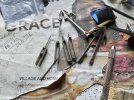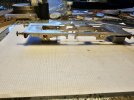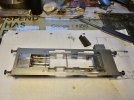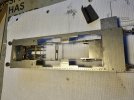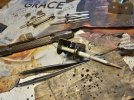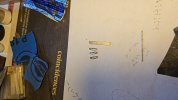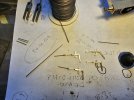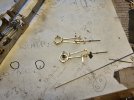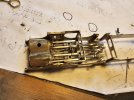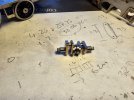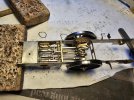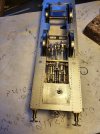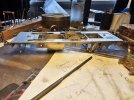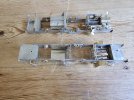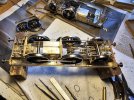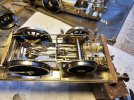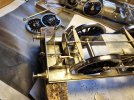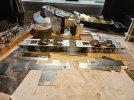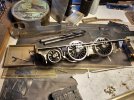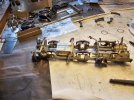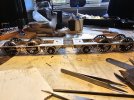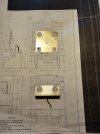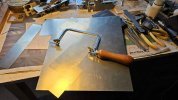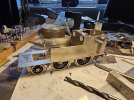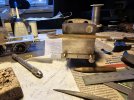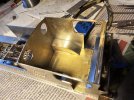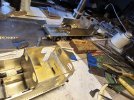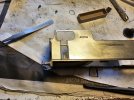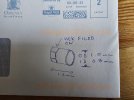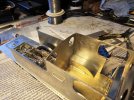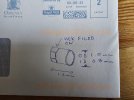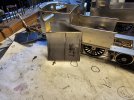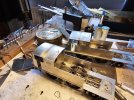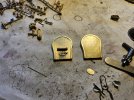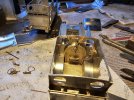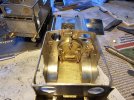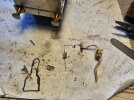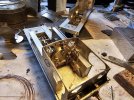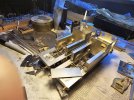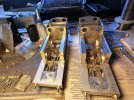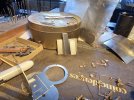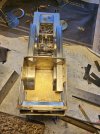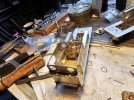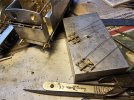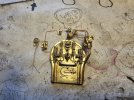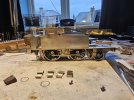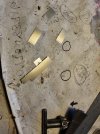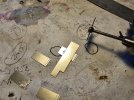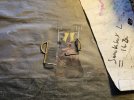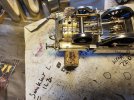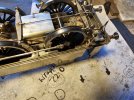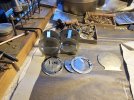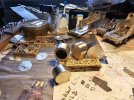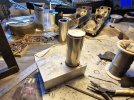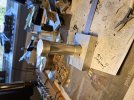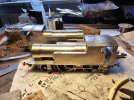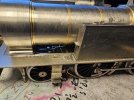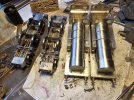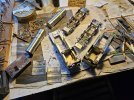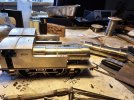Nick Dunhill
Western Thunderer
It's time for a new project, and this is a very esoteric one indeed. It's a Cambrian Railway Albion Tank. The CR bought 12 2-4-0 tender locos from Sharp-Stewart in the 1860s (and so did the Furness Railway, which is the origin of the GA I have used.) They chugged around for quite a while, aquiring new boilers and better brakes etc, and in 1907 two were converted into tank locos and ran on the Barmouth to Pwllheli line. These are the two locos I am building, nos, 44 and 56.
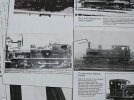
Taff Vale Models have recently introduced a kit for the tender version of the loco, I have been sent a set of custom etches from Julian at TVM ordered by my client to build the tank version. The build is to be an all singing and dancing model.
The first step was to build a footplate. The locos had a wooden buffer beam at the front and the custom etches had a series of brass overlays that were designed to be planted behind either sides of the buffer beam to give the illusion of a wooden plank. I didn't much like that so got a local joinery to cut some wooden ones from a left over lump of mahogony (from a sustainable source of course!) I modified the buffer beam etches to suit. The etches had no castings included but luckily Markins (via Roxey Mouldings) do some rather nice turned ones. These were modified slightly to be self contained.
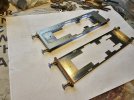
The wooden bits slot in and out so they won't get wet when neutralising acid fluxes after a soldering session.
The next but was to make a chassis. The chassis frames supplied were fine, but the stays were only 24 mm wide (with cusps) which would have resulted in a chassis only 25 mm wide. This is far too narrow to fit inside motion, and also the kit stays were a bit randomly placed. I cut out some more with a better representation of the rear drag beam and cylinder block.
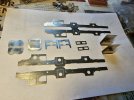
Next week I have to build a pair of chassis and incorporate the slide bars and crossheads.
Here's an interesting little loco I have been building on the side for someone.
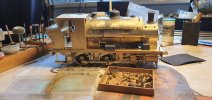
It's a GWR 2196 class built from an Agenoria kit. As is usual with Agenoria the kit was a delight to build. Everyone should build an Agenoria kit at some stage, they fit together very nicely, especially for a hand drawn kit. It's at paint now.
Also noteworthy are the crew I bought from Andrew Stadden and had painted by Evan Griffiths. Evan is really a Wargamer/D&D(?) guy but does excellent paint jobs on my crews. All properly researched etc. (evilevan666@yahoo.com)
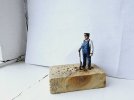
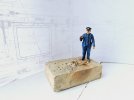
Skeggy anyone?
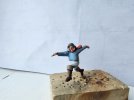

Taff Vale Models have recently introduced a kit for the tender version of the loco, I have been sent a set of custom etches from Julian at TVM ordered by my client to build the tank version. The build is to be an all singing and dancing model.
The first step was to build a footplate. The locos had a wooden buffer beam at the front and the custom etches had a series of brass overlays that were designed to be planted behind either sides of the buffer beam to give the illusion of a wooden plank. I didn't much like that so got a local joinery to cut some wooden ones from a left over lump of mahogony (from a sustainable source of course!) I modified the buffer beam etches to suit. The etches had no castings included but luckily Markins (via Roxey Mouldings) do some rather nice turned ones. These were modified slightly to be self contained.

The wooden bits slot in and out so they won't get wet when neutralising acid fluxes after a soldering session.
The next but was to make a chassis. The chassis frames supplied were fine, but the stays were only 24 mm wide (with cusps) which would have resulted in a chassis only 25 mm wide. This is far too narrow to fit inside motion, and also the kit stays were a bit randomly placed. I cut out some more with a better representation of the rear drag beam and cylinder block.

Next week I have to build a pair of chassis and incorporate the slide bars and crossheads.
Here's an interesting little loco I have been building on the side for someone.

It's a GWR 2196 class built from an Agenoria kit. As is usual with Agenoria the kit was a delight to build. Everyone should build an Agenoria kit at some stage, they fit together very nicely, especially for a hand drawn kit. It's at paint now.
Also noteworthy are the crew I bought from Andrew Stadden and had painted by Evan Griffiths. Evan is really a Wargamer/D&D(?) guy but does excellent paint jobs on my crews. All properly researched etc. (evilevan666@yahoo.com)


Skeggy anyone?


